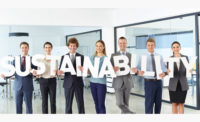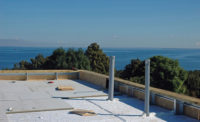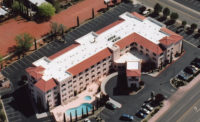It's About People, Too!

When we think about “sustainable” or “green,” we tend to focus on the environmental aspects of sustainability, including key natural resources of energy, air, water and materials. But the best definitions of sustainability include two additional principles. First, true sustainability must make economic sense. That’s why the Center’s new RoofPoint program (See last month’s column) emphasizes key economic features of roofing systems such as durability, installation quality, and long-term maintenance. But beyond the obvious environmental and economic aspects of sustainability, all of these “green” things must be viewed in a human and social context. After all, the whole purpose of sustainable development is to make the world a better place for people, both current and future generations.
These three dimensions of sustainability are frequently illustrated using a venn diagram showing both the distinctness of each dimension as well as their critical convergence. For roofs or anything else to be truly sustainable, they must address the environmental, economic and social issues illustrated in Figure 1.
Yes, we need to be good stewards of our natural resources in order to build sustainable roofs. And we need to make these roofs economically efficient over the long term. But we also need to be sure the health and safety of both building occupants and roofing workers are assured.
And there are many ways we can contribute to “people sustainability” in roofing projects. During the pilot program for the Center’s RoofPoint sustainable roof rating system, we were very impressed how many projects included important people-related initiatives. In fact, every project submitted so far in the RoofPoint program has included one or more strategies related to human health, safety and productivity. Examples of these strategies include:
• Roof vapor retarders and air barriers to minimize unwanted air and moisture movement and moisture-protection plans during installation to minimize the potential for moisture infiltration and future mold growth.
• Best insulation practices to reduce thermal “shorts” in the roofing system and the use of cool roof surfaces to provide consistent and uniform comfort in the building.
• Use of roof areas as a social environment for building occupants. Examples include rooftop classrooms, environmental demonstration areas, exercise facilities and social meeting spaces.
• Permanent fall-protection systems and traffic management plans to extend good safety practice beyond project installation and to help protect building maintenance workers.
• Low-VOC coatings, adhesives and sealants to reduce worker and occupant exposure to airborne chemicals.
• Ergonomic tools and practices to increase productivity and reduce the potential for injury.
As market demand for sustainable roofing grows, these people-related strategies will become more and more important. And as they grow in importance, there will be new opportunities for roofing contractors to sell added value. Greater “people-sustainability” awareness will make it easier to sell and install permanent fall protection systems to protect workers and maintenance crews. Demand for sustainable buildings will also grow demand for best roofing practices, including multiple staggered layers of roof insulation, air barriers, vapor retarders, and many more. Finally, the increasing emphasis on sustainability will help raise the professionalism and image of our industry as a valuable contributor to the long-term success of the environment, our economy and all people who live and work under the roofs we install.
Finally, because many of the human aspects of sustainable roofing are addressed in more detail in this safety-focused issue of Roofing Contractor, I would encourage you to take a look at the many new tools and methods showcased in this magazine to make our rooftops a healthier, safer and more productive place for both roofing workers and building occupants. And remember, sustainability is about people, too!
Looking for a reprint of this article?
From high-res PDFs to custom plaques, order your copy today!







